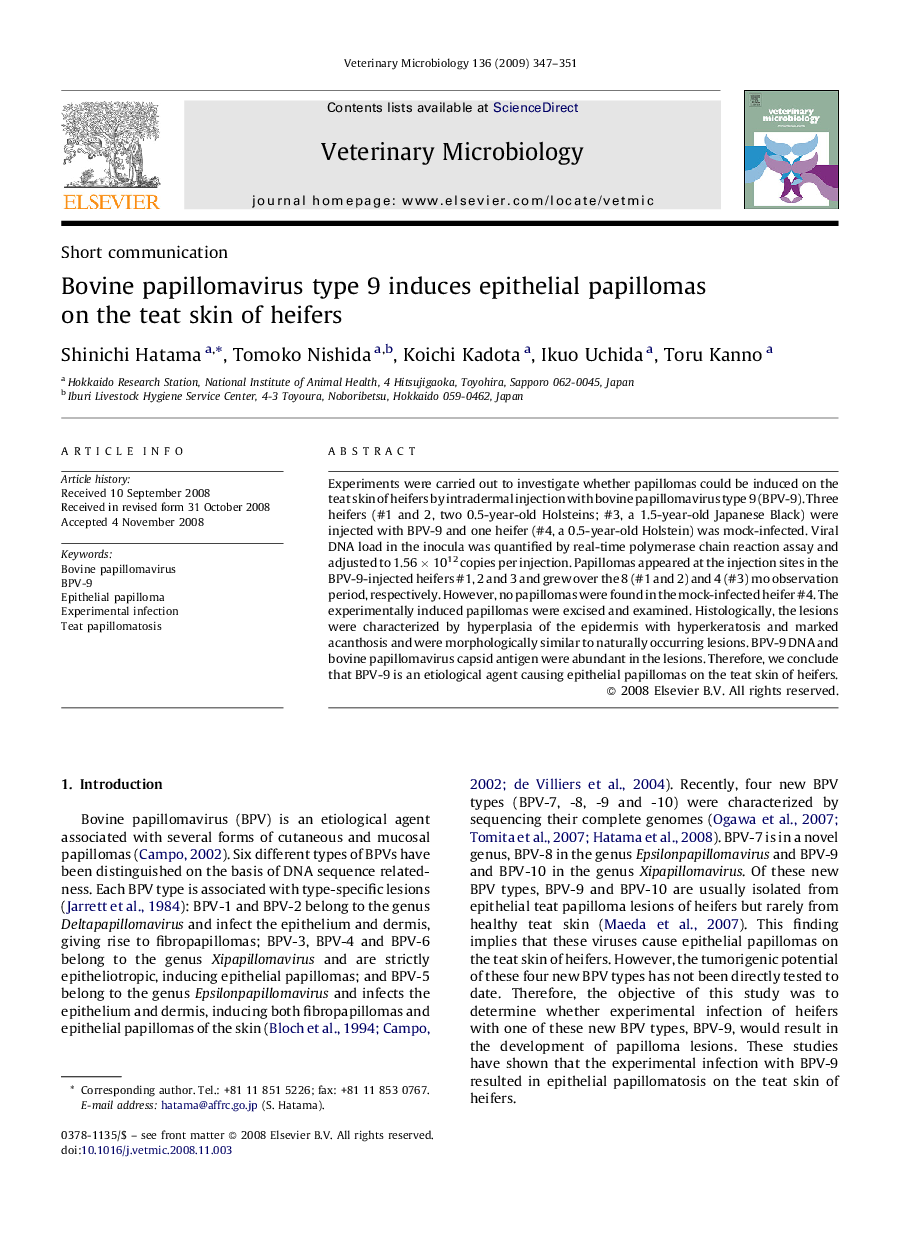| Article ID | Journal | Published Year | Pages | File Type |
|---|---|---|---|---|
| 2468466 | Veterinary Microbiology | 2009 | 5 Pages |
Experiments were carried out to investigate whether papillomas could be induced on the teat skin of heifers by intradermal injection with bovine papillomavirus type 9 (BPV-9). Three heifers (#1 and 2, two 0.5-year-old Holsteins; #3, a 1.5-year-old Japanese Black) were injected with BPV-9 and one heifer (#4, a 0.5-year-old Holstein) was mock-infected. Viral DNA load in the inocula was quantified by real-time polymerase chain reaction assay and adjusted to 1.56 × 1012 copies per injection. Papillomas appeared at the injection sites in the BPV-9-injected heifers #1, 2 and 3 and grew over the 8 (#1 and 2) and 4 (#3) mo observation period, respectively. However, no papillomas were found in the mock-infected heifer #4. The experimentally induced papillomas were excised and examined. Histologically, the lesions were characterized by hyperplasia of the epidermis with hyperkeratosis and marked acanthosis and were morphologically similar to naturally occurring lesions. BPV-9 DNA and bovine papillomavirus capsid antigen were abundant in the lesions. Therefore, we conclude that BPV-9 is an etiological agent causing epithelial papillomas on the teat skin of heifers.
